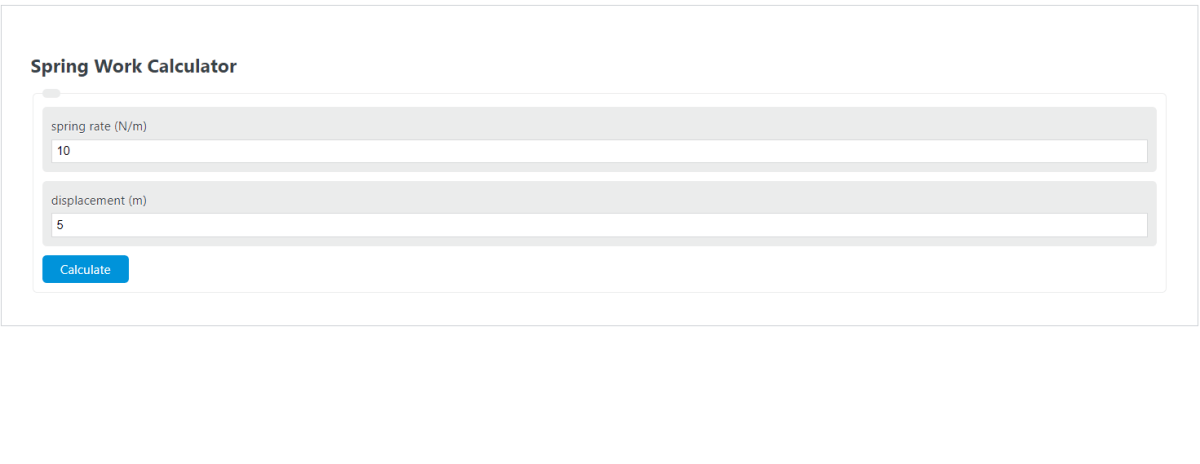Enter the spring rate (N/m) and the displacement (m) into the calculator to determine the Spring Work.
- All Physics Work Calculators
- Torsion Bar Spring Energy Calculator
- Spring Constant Calculator (F=-kx)
- Pressure Volume Work Calculator
- Rate of Work Calculator
- Electrical Work Calculator
- Force to Work Calculator
Spring Work Formula
The following formula is used to calculate the Spring Work.
Ws = k * x^2
- Where Ws is the Spring Work (Joules (N-m/s))
- k is the spring rate (N/m)
- x is the displacement (m)
To calculate spring work, multiply the spring constant by the displacement squared.
How to Calculate Spring Work?
The following two example problems outline how to calculate the Spring Work.
Example Problem #1:
- First, determine the spring rate (N/m). In this example, the spring rate (N/m) is given as 4.
- Next, determine the displacement (m). For this problem, the displacement (m) is given as 12.
- Finally, calculate the Spring Work using the equation above:
Ws = k * x^2
Inserting the values from above and solving the equation with the imputed values gives:
Ws = 4 * 12^2 = 576 (Joules (N-m/s))
FAQ
What is the significance of the spring rate in calculating spring work?
The spring rate, denoted as (k) in the formula, measures the stiffness of the spring. It is crucial in calculating spring work because it determines how much force the spring can exert for a given displacement. A higher spring rate means the spring is stiffer and requires more force to compress or extend by a certain distance, resulting in more work done during the process.
How does displacement affect the amount of work done by a spring?
Displacement, represented by (x) in the formula, directly affects the amount of work done by a spring. Since the work done is proportional to the displacement squared ((x^2)), even small increases in displacement can lead to significant increases in the work done. This relationship highlights the importance of displacement in energy storage and release mechanisms involving springs.
Can the spring work formula be applied to all types of springs?
The spring work formula (Ws = k * x^2) is primarily applicable to linear or Hookean springs, where the force exerted by the spring is directly proportional to its displacement. For non-linear springs, such as those with variable stiffness or those that do not obey Hooke’s law throughout their range of motion, this formula may not accurately describe the work done. In such cases, more complex models or empirical data might be necessary to calculate the work accurately.
